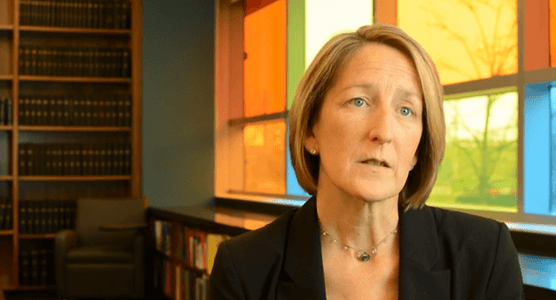“In past years, there really wasn’t a system of care for people with brain injury… What we’ve done is we’ve really learned about the consequences of injury, and we’ve come up with some novel treatments… We’re not finished.” -Flora Hammond, MD
Chair for the Department of Physical Medicine and Rehabilitation and project director of the Indiana Traumatic Brain Injury (TBI) Model System, Flora Hammond, MD, is making strides in brain injury research, specifically in regard to patient rehabilitation. Dr. Hammond discusses how her own interests intertwine in the national research effort of the model system, a designated center conducting research and comprehensive rehabilitation care for TBI patients.
Discuss the TBI Model Systems and how it helps researchers understand the nature of a brain injury and rehabilitation.
The TBI Model System program funds local research studies, collaborative multi-site studies and a longitudinal database. The findings of the TBI Model Systems have changed what we know about brain injury and the care we deliver. The longitudinal national database, with more than 16,000 participants enrolled over the past 25 years, has been an invaluable resource to learning about brain injury. The data has helped change misconceptions about TBI.
What are some big misconceptions about traumatic brain injury?
Common misconceptions are that outcomes after TBI are bad or that recovery is complete within the first 12 months. Through the TBI Model System database, we have learned that many people with TBI live independently, and that recovery continues even years after injury. This information has taught us to apply a perspective that brain injury is a chronic condition that merits a model of brain injury care that better meets the lifetime needs after brain injury. Specifically, individuals with brain injury should have ongoing follow-ups by a brain injury specialist with the pursuit of optimizing medical status, function and quality of life in the years after TBI.
What are your personal research interests and how do they correlate with the TBI Model Systems?
My personal research interests include: brain injury outcome prediction, questioning the accuracy of outcome predictions widely handed out with confidence in the first days to months after injury; irritability and aggression, helping to identify triggers via a wide range of treatments; aging and change after brain injury by demonstrating that people may improve over time after injury, while some may not change and some may decline; marital relationships and looking for ways to improve interpersonal relationships after brain injury; finding out what obstacles may keep individuals with brain injury from exercising their right to vote; and, enhancing the relevance of research findings through an approach where people with brain injury work alongside scientists to answer questions that impact their lives.
Fortunately, the TBI Model System program have allowed research in this wide range of interests.
At the Rehabilitation Hospital you treat patients who have been hospitalized for TBI. Describe the steps taken to help those patients through their recovery process (returning back to their day-to-day lives).
We work with a team of experts in brain injury to determine the prognosis and treatment needs that will best help each individual return to their day-to-day lives. That team includes the physical medicine and rehabilitation physician, brain injury specialist, rehabilitation nurse, physical therapist, occupational therapist, speech therapist, recreational therapist, psychologist, case manager, family members and the person injured.
Together we develop a treatment and education plan. The typical stay in a rehabilitation hospital is two-three weeks with a goal of returning home. Upon the patient’s return to home, we continue treatment through follow-ups in the outpatient setting. We monitor the individual’s status and continue with evaluations and treatments where needed to decrease the symptoms and impact of brain injury. For example, we work on improving sleep, cognitive function, behavior, emotional function and motor function to optimize daily function, interpersonal relationships and return to employment/school.
Dr. Hammond has received numerous awards for her research in brain injury, and is the recent recipient of the 2017 American Academy of Physical Medicine and Rehabilitation Distinguished Member Award. She most recently was the keynote speaker at the 2018 Brain Injury Association of Ohio Annual Summit.
Learn more about TBI expertise, including the TBI Model System, from IU School of Medicine.
